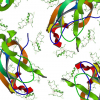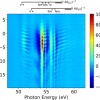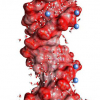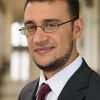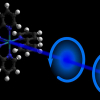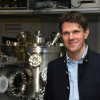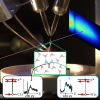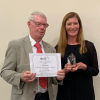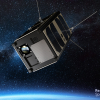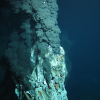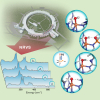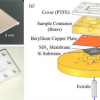Spectroscopy News
A new sensor fusion technique based on X-ray and 3D imaging promises improvements to the 3D modelling of mineral resources and more efficient sorting of precious metals.
When assessing a burn patient, doctors use factors such as the depth and size of the burn, as well as the time required for re-epithelialisation. Another, possibly more accurate way to classify burn severity has been developed through analysing the proteome of blister fluid by mass spectrometry.
Researchers at MIT have developed a way to dramatically enhance the sensitivity of nuclear magnetic resonance spectroscopy using pulsed dynamic nuclear polarisation.
Scientists from the Max Born Institute for Nonlinear Optics and Short Pulse Spectroscopy have carried out the first attosecond transient absorption spectroscopy (ATAS) experiment on a polyatomic molecule.
Research at NPL has revealed unusual qualities in light with future applications for synchronously pumped optical frequency comb generation and resonator-based sensor technologies.
A range of components for miniaturised mid-IR gas sensors from source to detector have been developed by the Horizon 2020 project MIREGAS.
Pairs of negatively charged phosphate groups and positive magnesium ions represent a key structural feature of DNA and RNA embedded in water. Vibrations of phosphate groups via 2D-IR spectroscopy have now been established as selective probes of such contact pairs and allow for a mapping of interactions and structure on the ultrafast time scales of molecular dynamics.
EU grant worth EUR 2 million for the development of a new approach in optical spectroscopy of the superheavy elements.
A new method to measure circular dichroism in real-time (1 ps to 1 ns) allows measurements into the deep UV.
A miniature food scanner based on NIR spectroscopy will allow consumers and supermarket operators to determine the ripeness and shelf life of produce and display the results via an app.
Timegate Instruments, manufacturer of time-gated Raman spectroscopy instruments, has raised funding of 2.6 M€ for product and business development.
Matthias Kling is to head a new research group in Ultrafast X-Ray Imaging and Spectroscopy in the Laboratory for Attosecond Physics at the Max Planck Institute of Quantum Optics.
The NeoSpectra-Micro chip-scale, near infrared spectral sensor has been customised for use in Henkel Beauty Care’s Schwarzkopf Professional SalonLab Smart Analyzer for hairdressers.
A table-top, laser-based extreme high-order harmonic source for short-pulse soft-X-ray absorption spectroscopy in the water window has been combined with novel flatjet technology for simultaneous probing of carbon and nitrogen atoms in organic molecules in aqueous solution.
Headwall Photonics has appointed Christian Felsheim as Business Development and OEM Account Manager for the European region.
At the IRDG Christmas Meeting held at University College London, the 2018 Norman Sheppard Award of the UK’s IRDG was presented to John Chalmers.
A Finnish nanosatellite has now reached space equipped with the world’s smallest infrared hyperspectral camera and returned its first images.
Scientists at the Laser Zentrum Hannover have measured zinc samples at a pressure of 600 bar using laser-induced breakdown spectroscopy, demonstrating that the LIBS system developed at the LZH is suitable for use at water depths of up to 6000 m.
The synchrotron radiation-based technique, 57Fe nuclear resonance vibrational spectroscopy, has been used to probe the hydrogen bonds that modulate the chemical reactivity of enzymes, catalysts and biomimetic complexes.
A new electron paramagnetic resonance (EPR) method only needs a very small liquid sample to provide detailed information on the state of the metal ions in a metalloprotein solution.


